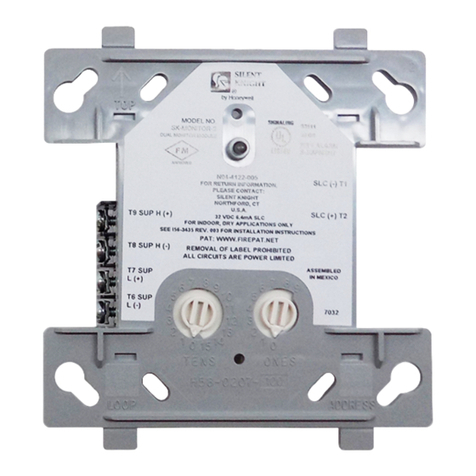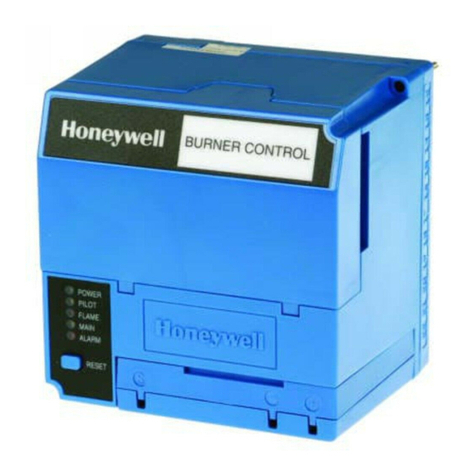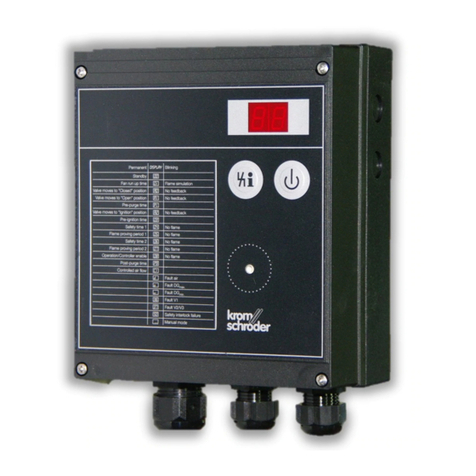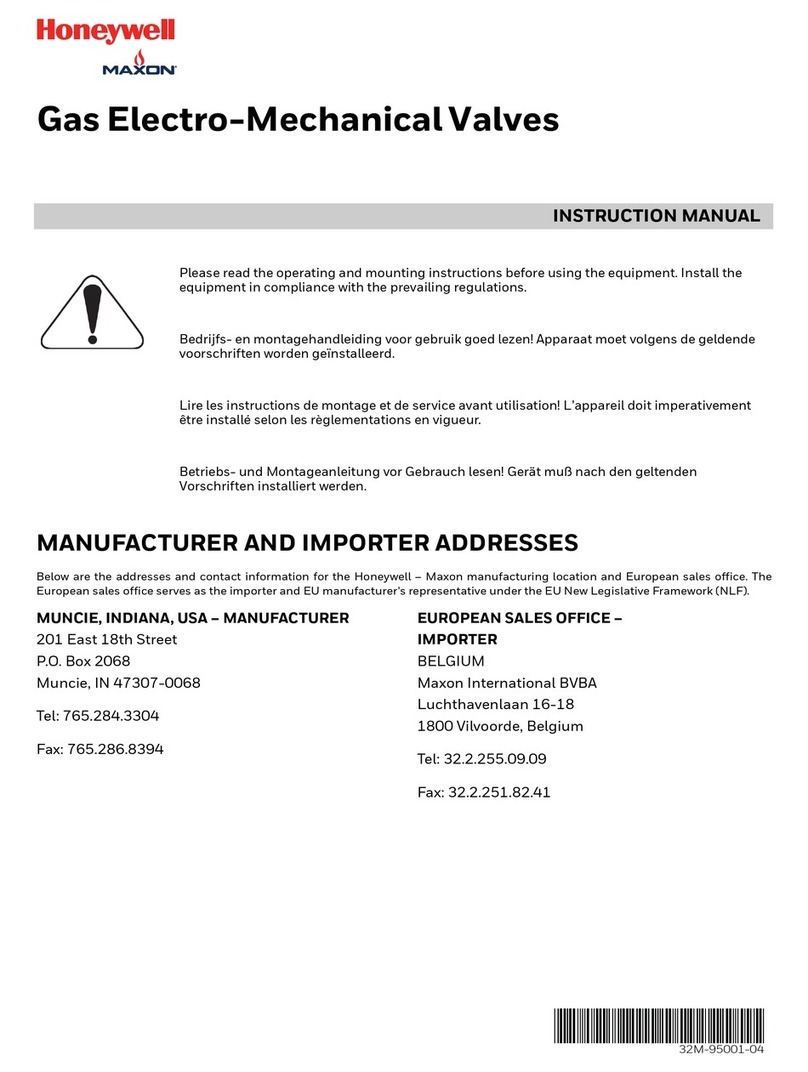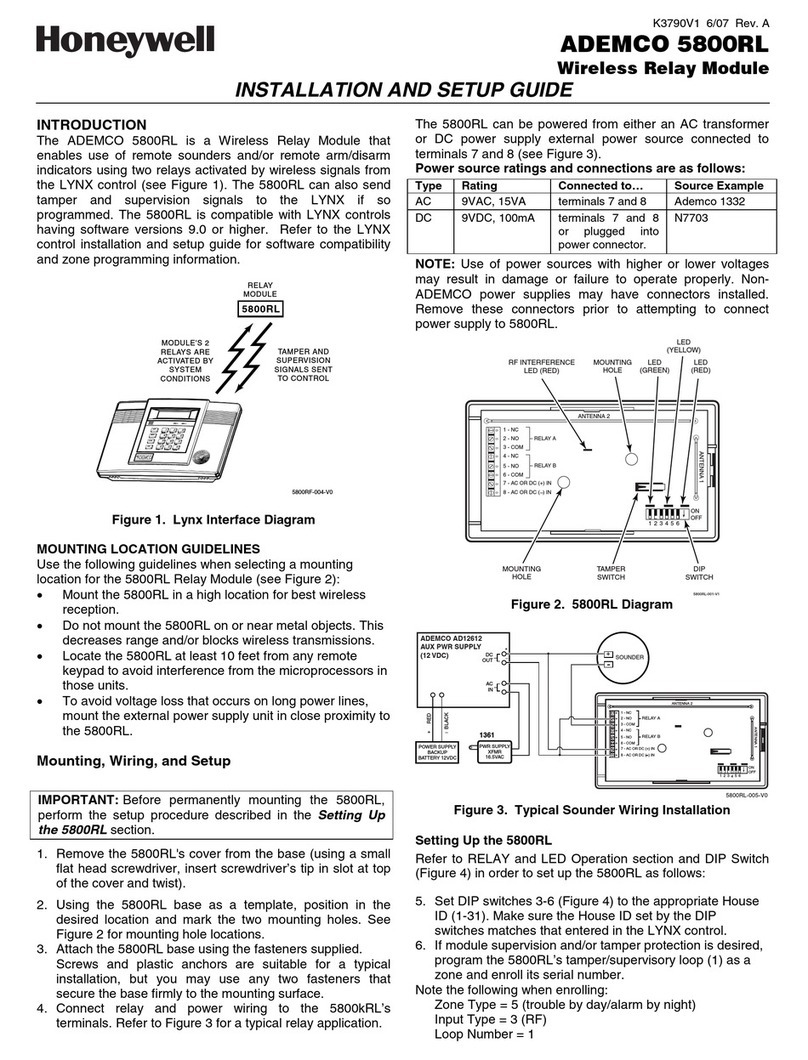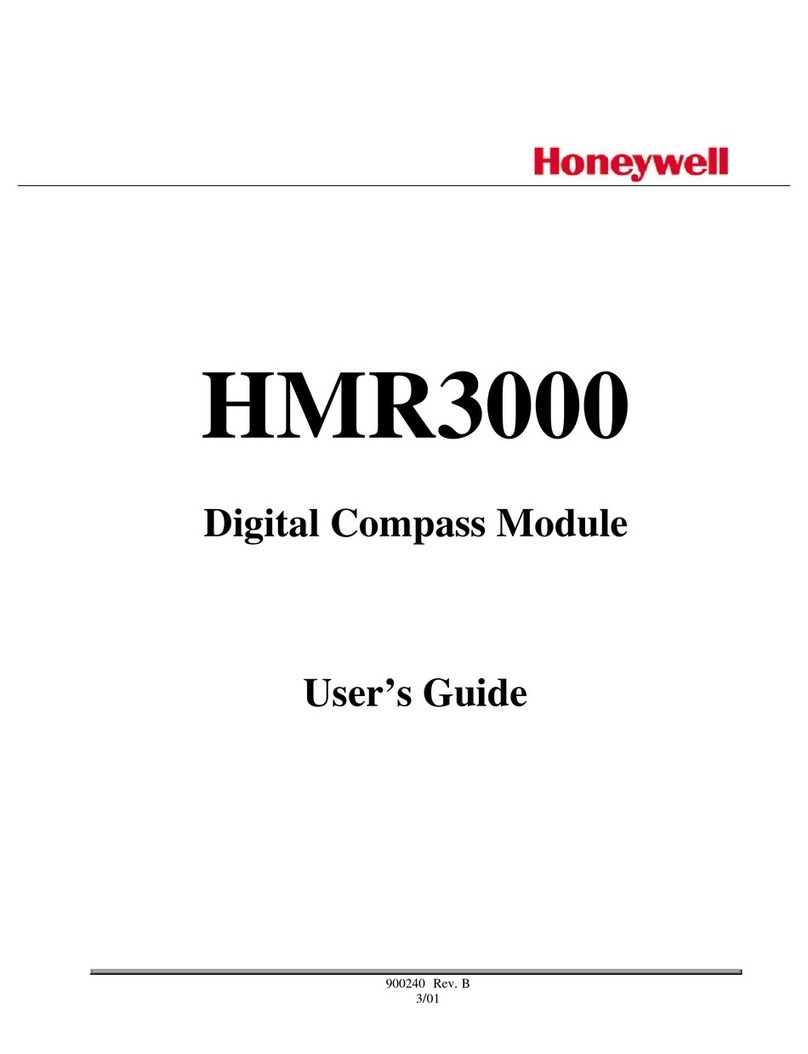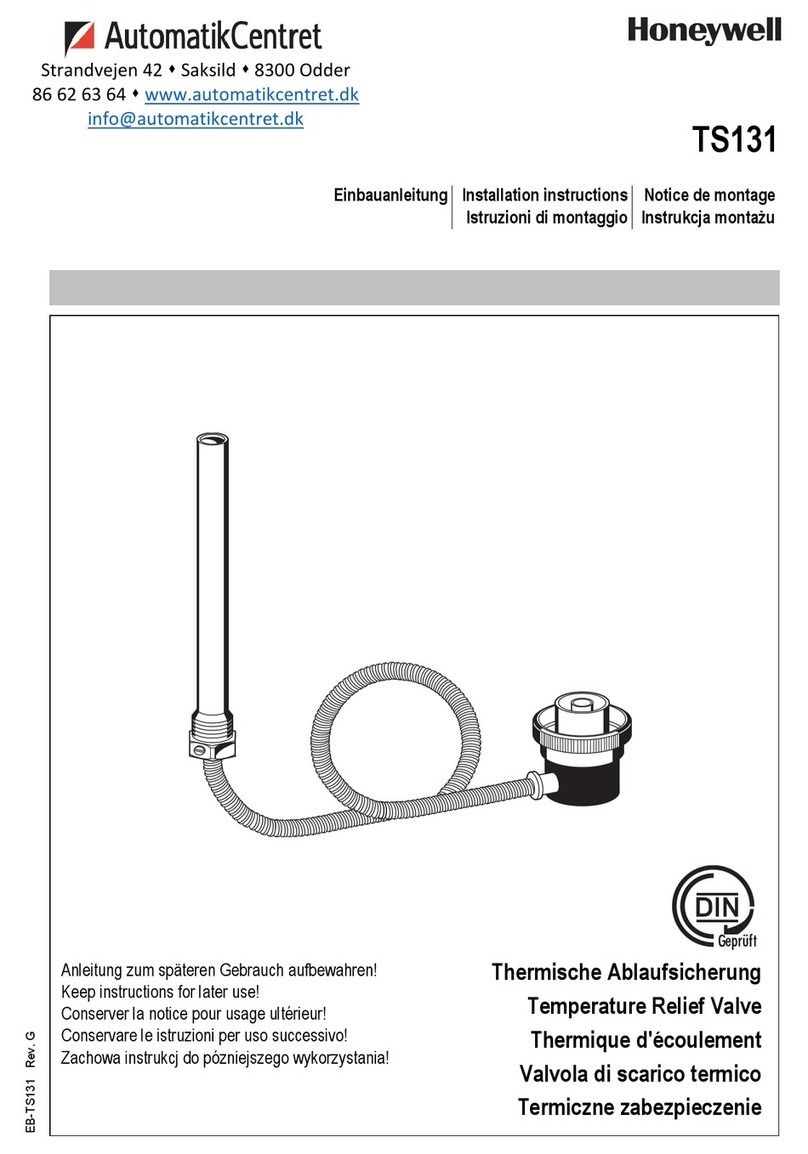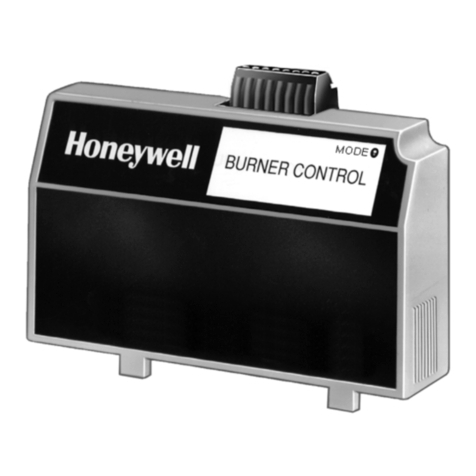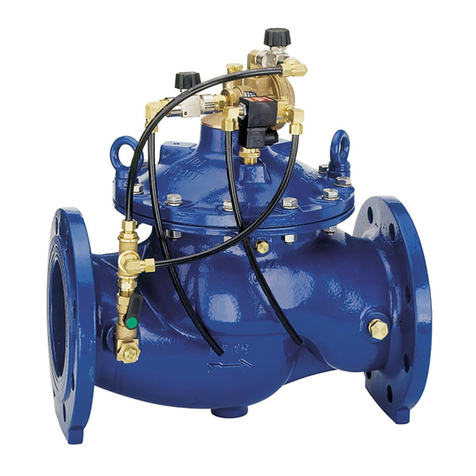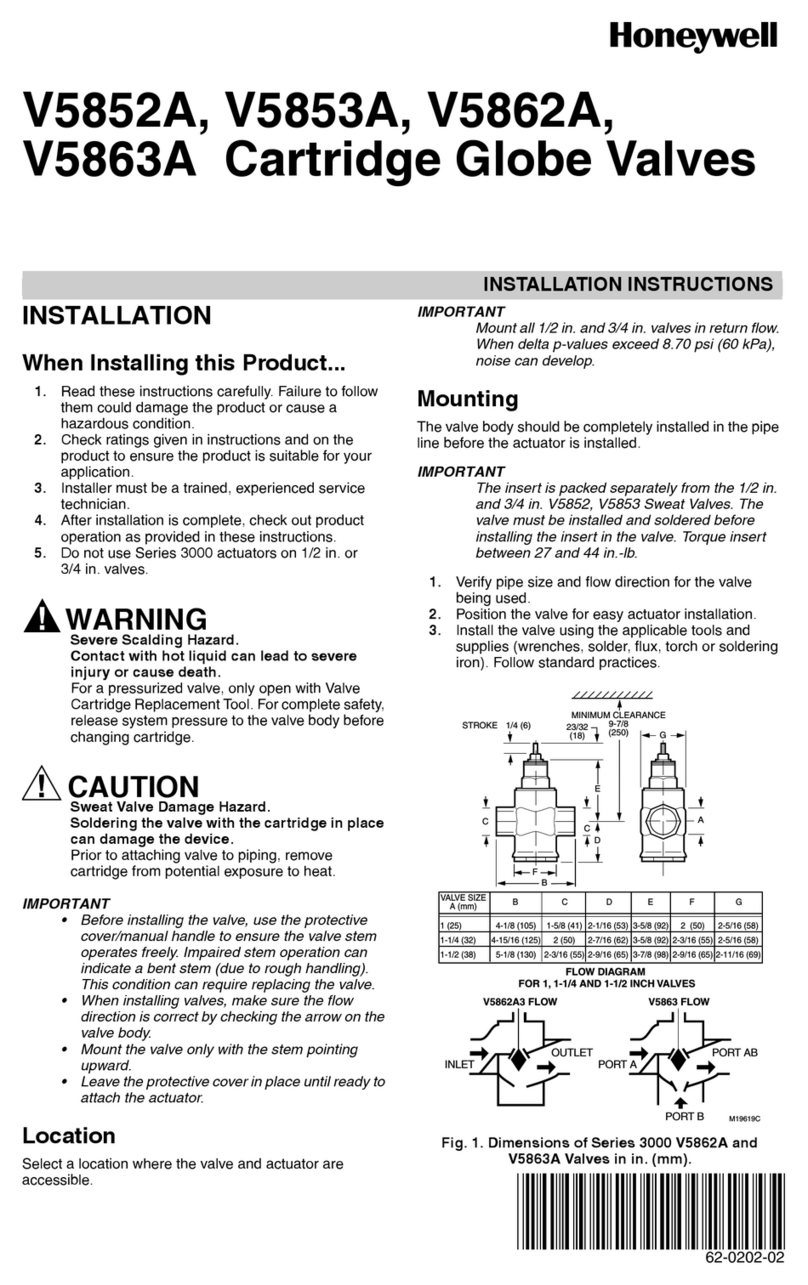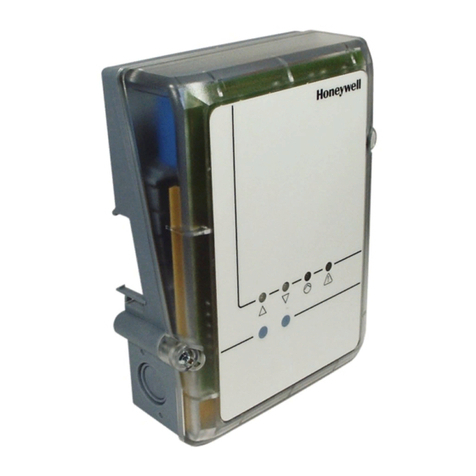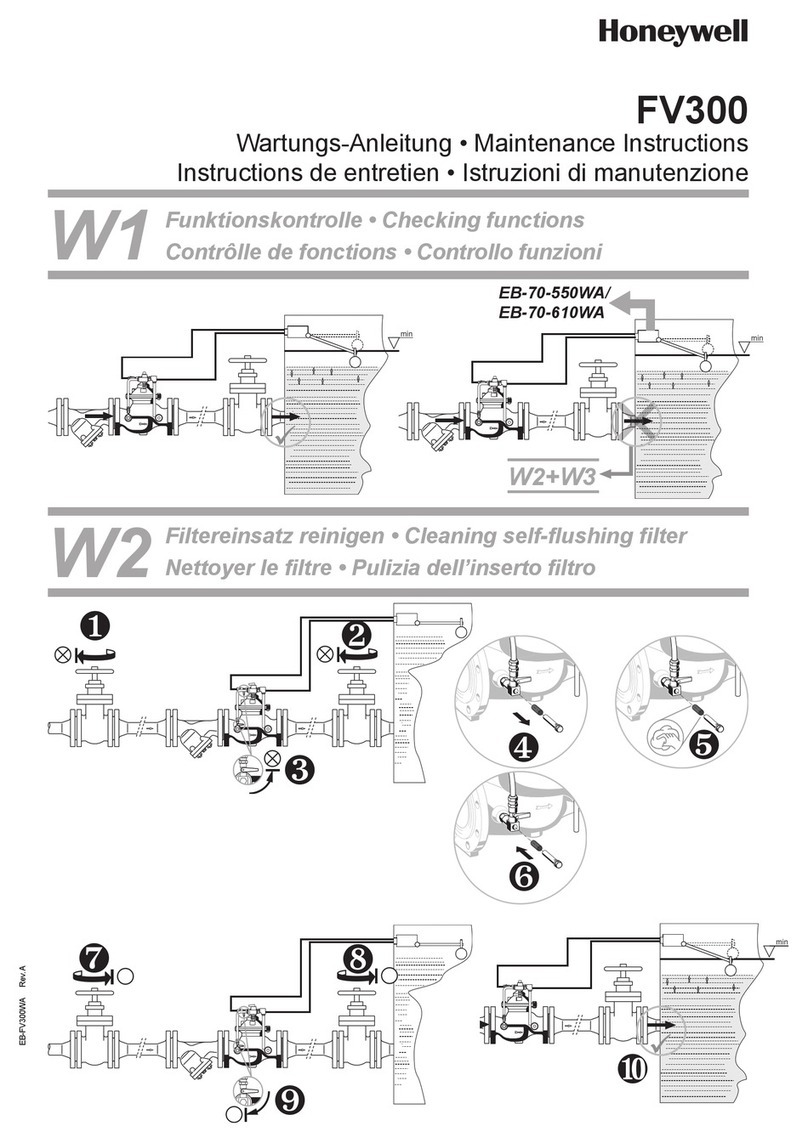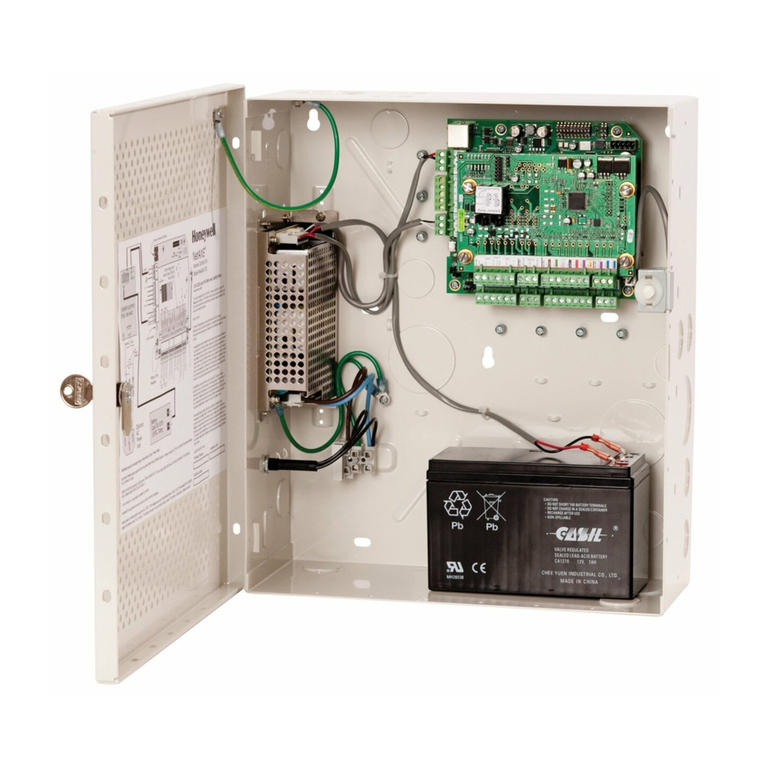S8 610 U UNIVERSAL INTERM ITTEN T PILO T MODULE
P ANNING THE INSTA ATION
A WARNING
FIRE OR EXPLOSION HAZARD
CAN CAUSE PROPERTY DAMAGE,
SEVERE INJURY, OR DEATH.
Follow these warnings exactly:
1. Plan the installation as outlined below.
2. Plan for frequent aintenance as described in
the Maintenance section.
When inter ittent pilot syste s are used on central
heating equip ent in barns, greenhouses, and co er
cial properties and on heating appliances such as
co ercial cookers, agricultural equip ent, industrial
heating equip ent and pool heaters, heavy de ands are
ade on the controls. Special steps can be required to
prevent nuisance shutdowns and control failure due to
frequent cycling, severe environ ental conditions related
to oisture, corrosive che icals, dust or excessive heat.
These applications require Honeywell Ho e and
Building Control Engineering review; contact your
Honeywell Sales Representative for assistance.
Review the following conditions that can apply to your
specific installation and take the precautionary steps
suggested.
Frequent Cycling
These controls are designed for use on appliances that
typically cycle three to four ti es an hour only during the
heating season. In year-round applications with greater
cycling rates, the control can wear out ore quickly;
perfor a onthly checkout.
Water or Steam Cleaning
If a odule or gas control gets wet, replace it. If the
appliance is likely to be cleaned with water or stea ,
protect (cover) the controls and wiring fro water or
stea flow. Mount the controls high enough above the
botto of the cabinet so they do not get wet during
nor al cleaning procedures. Use a NEMA 4 enclosure
for the ignition odule; see the Electronic Ignition
Service Manual, for 70-6604.
High Humidity or Dripping Water
Dripping water can cause the odule to fail. Never install
an appliance where water can drip on the controls.
In addition, high a bient hu idity can cause the gas
control to corrode and fail.
If the appliance is in a hu id at osphere, ake sure air
circulation around the controls is adequate to prevent
condensation. Also, regularly check out the syste . A
NEMA 4 enclosure is reco ended for the ignition
odule; see the Electronic Ignition Service Manual,
for 70-6604.
Corrosive Chemicals
Corrosive che icals can attack the odule and gas
control, eventually causing a failure. If che icals are
used for routine cleaning, ake sure they do not reach
the controls. Where che icals are suspended in air, as
in so e industrial or agricultural applications, use a
NEMA 4 enclosure for the ignition odule; see the
Electronic Ignition Service Manual, for 70-6604.
Dust or Grease Accumulation
Heavy accu ulations of dust or grease can cause
controls to alfunction. Where dust or grease can be a
proble , provide covers for the odule and the gas
control to li it conta ination. A NEMA 4 enclosure is
reco ended for the ignition odule; see the Electronic
Ignition Service Manual, for 70-6604.
Heat
Excessively high te peratures can da age controls.
Make sure the axi u a bient te perature at the
control does not exceed the rating of the control. If the
appliance operates at very high te peratures, use
insulation, shielding, and air circulation, as necessary, to
protect the controls. Proper insulation or shielding should
be provided by the appliance anufacturer; verify proper
air circulation is aintained when the appliance is
installed.
INSTA ATION
When Installing this Ignition System...
1. Read these instructions carefully. Failure to follow
the could da age the co ponents or cause a
hazardous condition.
2. Check the ratings given in the instructions and on
the co ponents to ake sure they are suitable for
your application.
3. Installer ust be a trained, experienced service
technician.
4. After installation is co plete, check out co ponent
operation as provided in these instructions.
A WARNING
FIRE OR EXPLOSION HAZARD
CAN CAUSE PROPERTY DAMAGE,
SEVERE INJURY, OR DEATH.
1. If the ignition odule gets wet, it can
alfunction, leading to the accu ulation of
explosive gas.
• Never install where water can flood, drip or
condense on the odule.
• Never use a odule that has been wet.
Replace it.
2. Liquefied petroleu (LP) gas is heavier than
air and will not vent upward naturally.
• Do not light the pilot or operate electric
switches, lights or appliances until you are
sure the appliance area is free of gas.
3. Do not atte pt to disasse ble or clean the
odule. I proper reasse bly and cleaning
can cause unreliable operation.
A CAUTION
1. Disconnect power supply before beginning
wiring to prevent electrical shock or equip
ent da age.
2. If a new gas control is to be installed, turn off
the gas supply before starting installation.
Conduct a Gas Leak Test according to the
gas control anufacturer instructions after
the gas control is installed.
3. If the odule ust be ounted near
oisture or water, provide a suitable
waterproof enclosure.
4. Using the wire labels provided, label all wires
before they are disconnected. Wiring errors
can cause i proper appliance operation and
dangerous conditions such as bypassing
safety features.
369-0729—3
